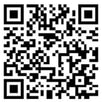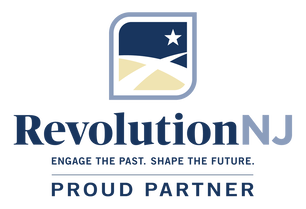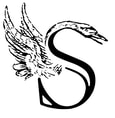The Swan Historical Foundation's mission to encourage knowledge and appreciation of the American Revolution for the benefit of present and future generations.
WHO WE AREThe Swan Historical Foundation, Inc. is a not-for-profit organization dedicated to encouraging and inspiring continuing knowledge and appreciation of the American Revolution for the benefit of present and future generations.
The foundation is named for an early United States Congressman, Dr. Samuel Swan, of Somerville, New Jersey who wrote the bill authorizing a pension for the widows and orphans of the first American soldiers. That legislation eventually led to the creation of the Veterans Administration. His great, great grandson, Mr. H. Kels Swan, established Swan Historical Foundation and served as its president. The Swan Historical Foundation is proud to be a partner and sponsor of America’s 250th Anniversary and is currently in the planning, design, and developmental process of building the Swan Historical Foundation Collection at the Washington Crossing State Park Visitor Center, Titusville, New Jersey. |
Ten Crucial Days
"... Christmas Day at Night, one hour before the day is the time fixed upon for our Attempt on Trenton. For heaven's sake keep this to yourself, as the discovery of it may prove fatal to us, our numbers..." George Washington
The Crossing, December 1776 by Lloyd Garrison
At the end of 1776, the demoralized American army was on the verge of disintegration, following a series of losses in New York and New Jersey. Many of the men’s enlistments would expire at the end of December. Something needed to be done to revitalize the new nation’s military campaign. General George Washington realized that a bold stroke against his enemies might inspire his fellow countrymen to continue the struggle.
Leading his army on Christmas night across the icy Delaware River from Pennsylvania, Washington launched a brilliant surprise attack against the Hessian garrison at Trenton. The move was a complete success, the Americans eliminating the enemy outpost, capturing nearly all of the enemy soldiers, and retreating back across the Delaware before the British could organize a counter strike.
At this point, the Americans decided to gamble everything on a second crossing at Trenton on January 2nd to confront the British army directly.
Finding the enemy too strong to resist, the Americans soon found themselves backed up against the Delaware, once again on the verge of destruction. But the wily Washington still had a few tricks up his sleeve.
Secretly abandoning his camp at night, he slipped his army out of the trap, circling around the British to march against their rear guard at Princeton.
A short, sharp battle ensued, with the Americans driving the enemy from the field before their main force could come to the rescue. Marching rapidly to a new, well-defended camp at Morristown, NJ, Washington and his men were able to threaten the British army’s headquarters in New York City throughout the following winter and spring. Seen as one of the turning points of the Revolution, the success of this lightning campaign, from December 25th to January 3rd, did indeed invigorate the army and reignited the fledgling nation’s commitment to American independence.
Leading his army on Christmas night across the icy Delaware River from Pennsylvania, Washington launched a brilliant surprise attack against the Hessian garrison at Trenton. The move was a complete success, the Americans eliminating the enemy outpost, capturing nearly all of the enemy soldiers, and retreating back across the Delaware before the British could organize a counter strike.
At this point, the Americans decided to gamble everything on a second crossing at Trenton on January 2nd to confront the British army directly.
Finding the enemy too strong to resist, the Americans soon found themselves backed up against the Delaware, once again on the verge of destruction. But the wily Washington still had a few tricks up his sleeve.
Secretly abandoning his camp at night, he slipped his army out of the trap, circling around the British to march against their rear guard at Princeton.
A short, sharp battle ensued, with the Americans driving the enemy from the field before their main force could come to the rescue. Marching rapidly to a new, well-defended camp at Morristown, NJ, Washington and his men were able to threaten the British army’s headquarters in New York City throughout the following winter and spring. Seen as one of the turning points of the Revolution, the success of this lightning campaign, from December 25th to January 3rd, did indeed invigorate the army and reignited the fledgling nation’s commitment to American independence.
WHAT DO WE DO
Swan Historical Foundation takes part in a several activities to educate the public about the American Revolution, to include:
- Care, interpretation & expansion of The Swan Collection
- Support to organization with a common interest in the American Revolution
- Participation in historical fairs, meetings, & conferences
- Talks & lectures delivered to community, historical & patriotic groups
- Financial support for historical programs in partnership with Washington Crossing State Park of New Jersey
- Loan of artifacts to other museums
- Periodic exhibits at various locations in Pennsylvania and New Jersey
- Access for third parties to photograph Swan Collection artifacts for books, articles & other publications
- Annual fellowship with the David Center for the American Revolution at the Library & Museum of the American Philosophical Society in Philadelphia
for a graduate student of American history - Living history talks & demonstrations
- Newsletter containing articles about the Revolution and profiles of items in The Swan Collection
- Sponsorship of the Washington Crossing American Revolution Round Table
- Tabletop demonstrations of American Revolution battles
Board of Trustees |
Trustees |
|
President
Robert H. Swan Chairman LTC Richard J. Kane, US Army Retired Finance Committee Vice Chairman Deborah Hvizdos Museum, Communications & Nominating Committees Secretary-Treasurer James C. Beachell Finance, Property, Nominating & Membership Committees |
Robert N. Fanelli
Museum, Finance, Property & Communications Committees Anthony D. Giannascoli, ESQ. Museum Committee Michael S. Jesberger Education Committee William Traubel Museum, Property, & Nominating Committees Matthew Skic Museum Committee Jim Swan Heidi Milano Museum Committee Andrew Plumly Museum Committee James Apffel |
Honorary Trustees
Founder
The Late H. Kels Swan
Pricilla Kim Reidinger, ESQ.
George Mason
Herbert M. Patullo
Constance Schuyler, PhD.
Ronald Mann
Phil Schuyler
The Late H. Kels Swan
Pricilla Kim Reidinger, ESQ.
George Mason
Herbert M. Patullo
Constance Schuyler, PhD.
Ronald Mann
Phil Schuyler
Help Support the Swan Historical Foundation
Swan Historical Scholarship Fund - Support our fellowship awards through the American Philosophical Society
and the David Library for the American Revolution
Building Fund - Support our exhibits in the new Washington Crossing State Park Visitor's Center, scheduled to open in 2026.
and the David Library for the American Revolution
Building Fund - Support our exhibits in the new Washington Crossing State Park Visitor's Center, scheduled to open in 2026.
Donate to
The Swan Historical Foundation, Inc.
to help support our:
Scholarship Fund
Building Fund
&
the General Fund to Support Conservation and Acquisitions
The Swan Historical Foundation, Inc.
to help support our:
Scholarship Fund
Building Fund
&
the General Fund to Support Conservation and Acquisitions
We need your support in order to reach these goals. Your donations generate the resources we need to grow and innovate, year after year.
Gifts of any size make an impact and are deeply appreciated.
A contribution to the Swan Historical Foundation is a lasting investment and is 100% tax-deductible to the fullest extent allowed by law.
Gifts of any size make an impact and are deeply appreciated.
A contribution to the Swan Historical Foundation is a lasting investment and is 100% tax-deductible to the fullest extent allowed by law.



